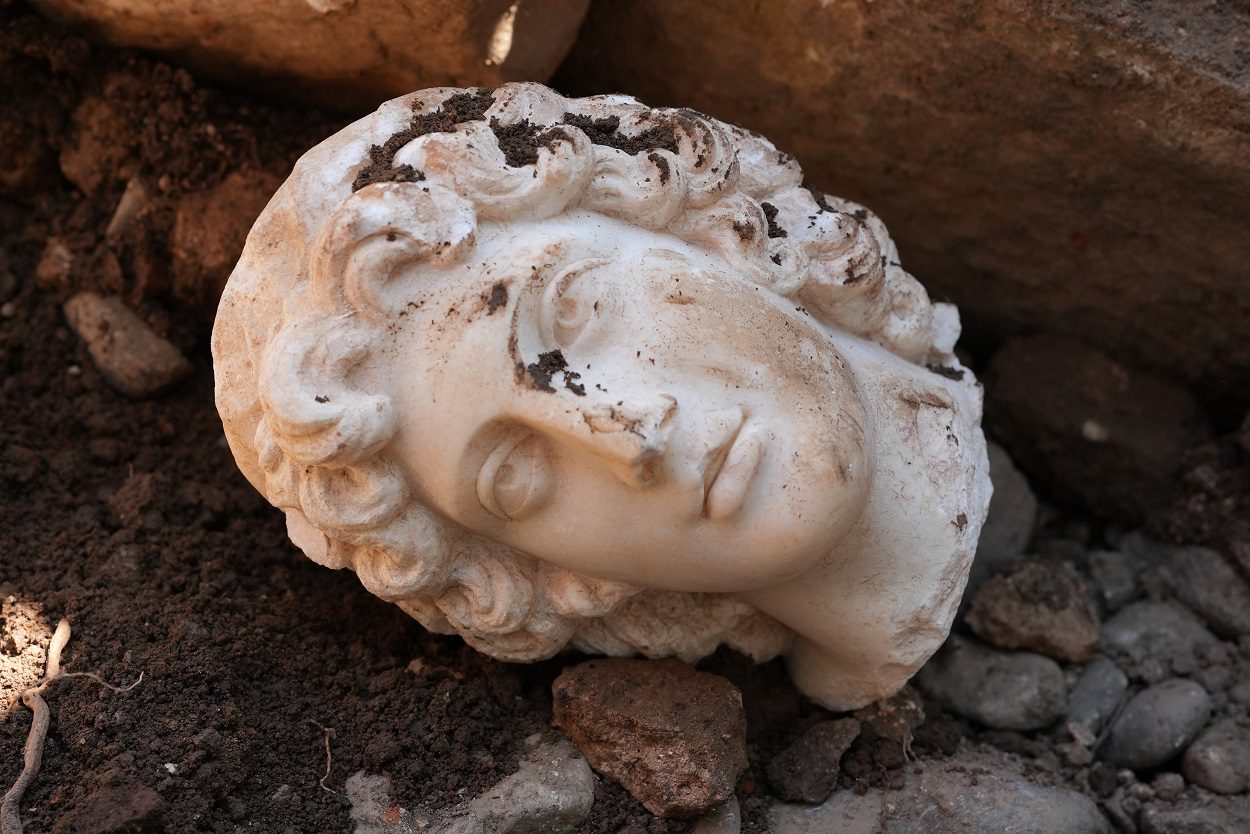Archaeologists have uncovered a marble head of Alexander the Great during excavations in the ruins of Prusias ad Hypium, located in the Düzce Province of Turkey.
Prusias ad Hypium was a city in ancient Bithynia, and afterwards in the late Roman province of Honorias. It was an important city on the road between Nicomedia (modern İzmit) at Propontis and Amastris (Amasra) at Euxine in the Pontus region.
The city was discovered during the 19th century, with recent excavations being conducted by the archaeology department of Düzce University under the patronage of the Konuralp Museum and supported by the Municipality of Düzce.
Excavations indicate that the settlement exhibite characteristics of a Hellenistic polis. Among the surviving remains of the city are remnants of the city walls, a gate within the fortifications, an open-air theatre, an aqueduct, and a Roman bridge.
A recent archaeological study has focused on the theatre, known locally as the “The Forty Stairs”. The theatre was built during the Hellenistic period (300–30 BC) and was expanded in the Roman period (30 BC- AD).
The archaeologists uncovered a marble head measuring 23 cm (from head to neck), dated to the 2nd century AD. According to the researchers, the head depicts Alexander the Great, also known as Alexander III of Macedon.
In a statement by Konuralp Museum, the marble head is described as having upward-looking eyes with drill marks on the pupils. Carved with a curly hairstyle flowing down to the neck, it is reminiscent of a lion’s mane.
Upon the discovery, archaeologists notified the Provincial Directorate of Culture and Tourism and Konuralp Museum, and after the on-site examination and cleaning of the marble head, it was sent to Konuralp Museum for further examination by experts.
Header Image Credit : Düzce Town Hall





